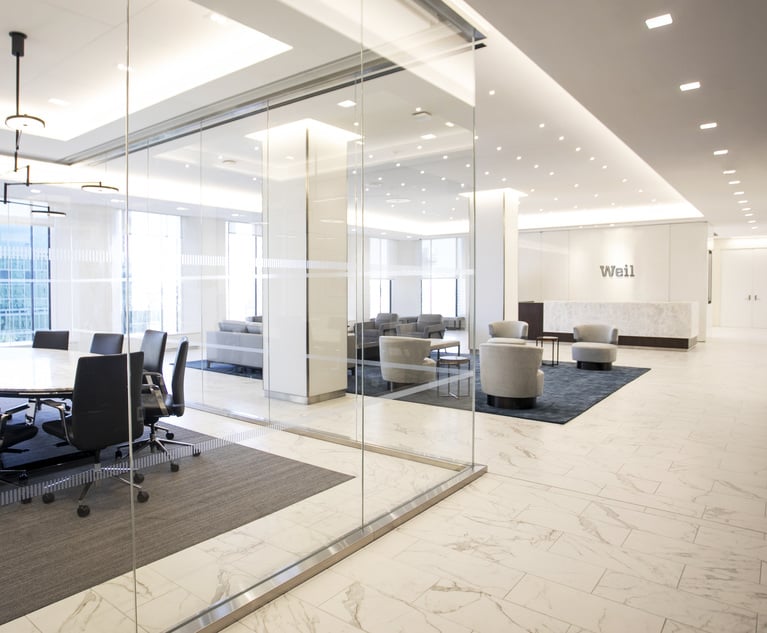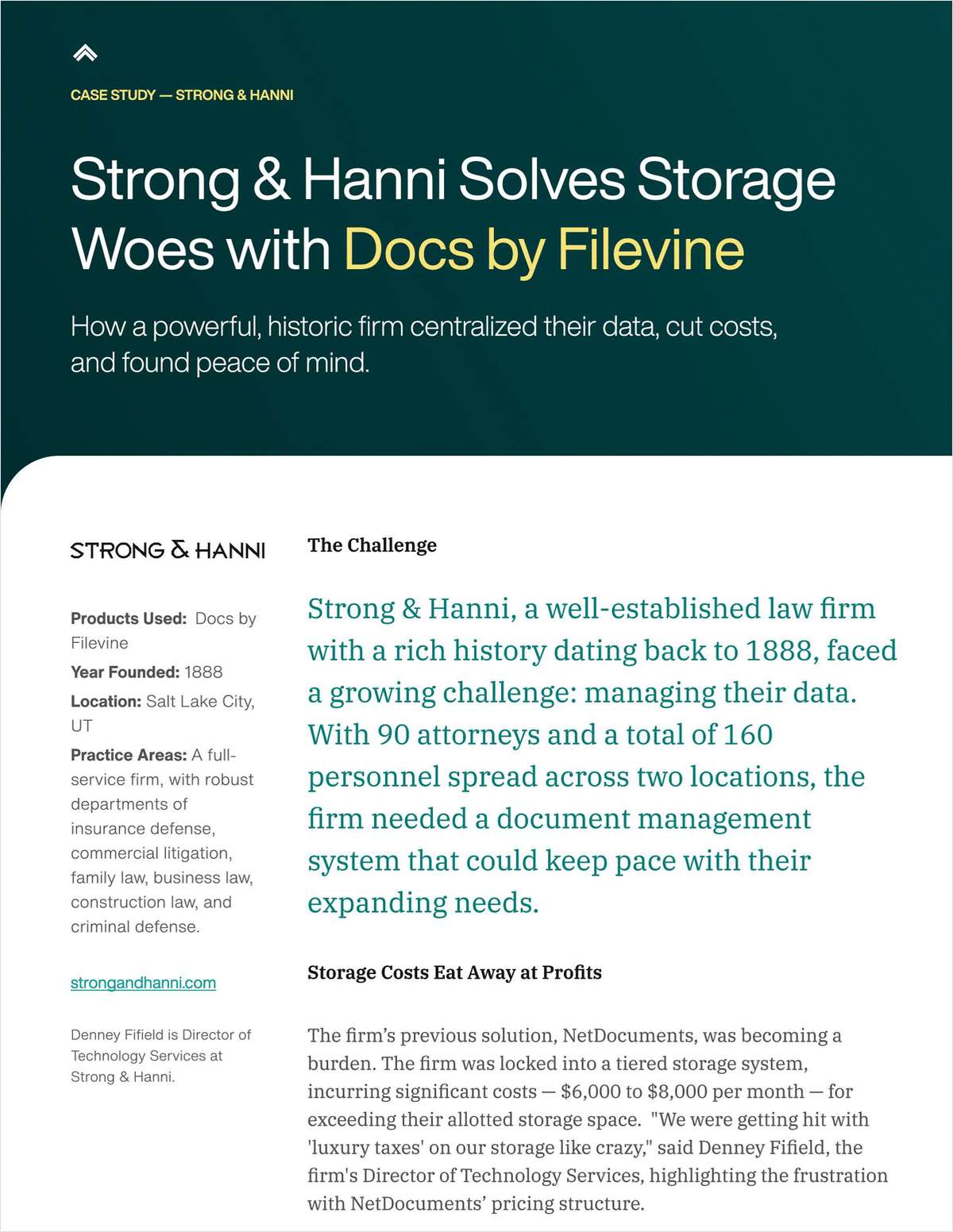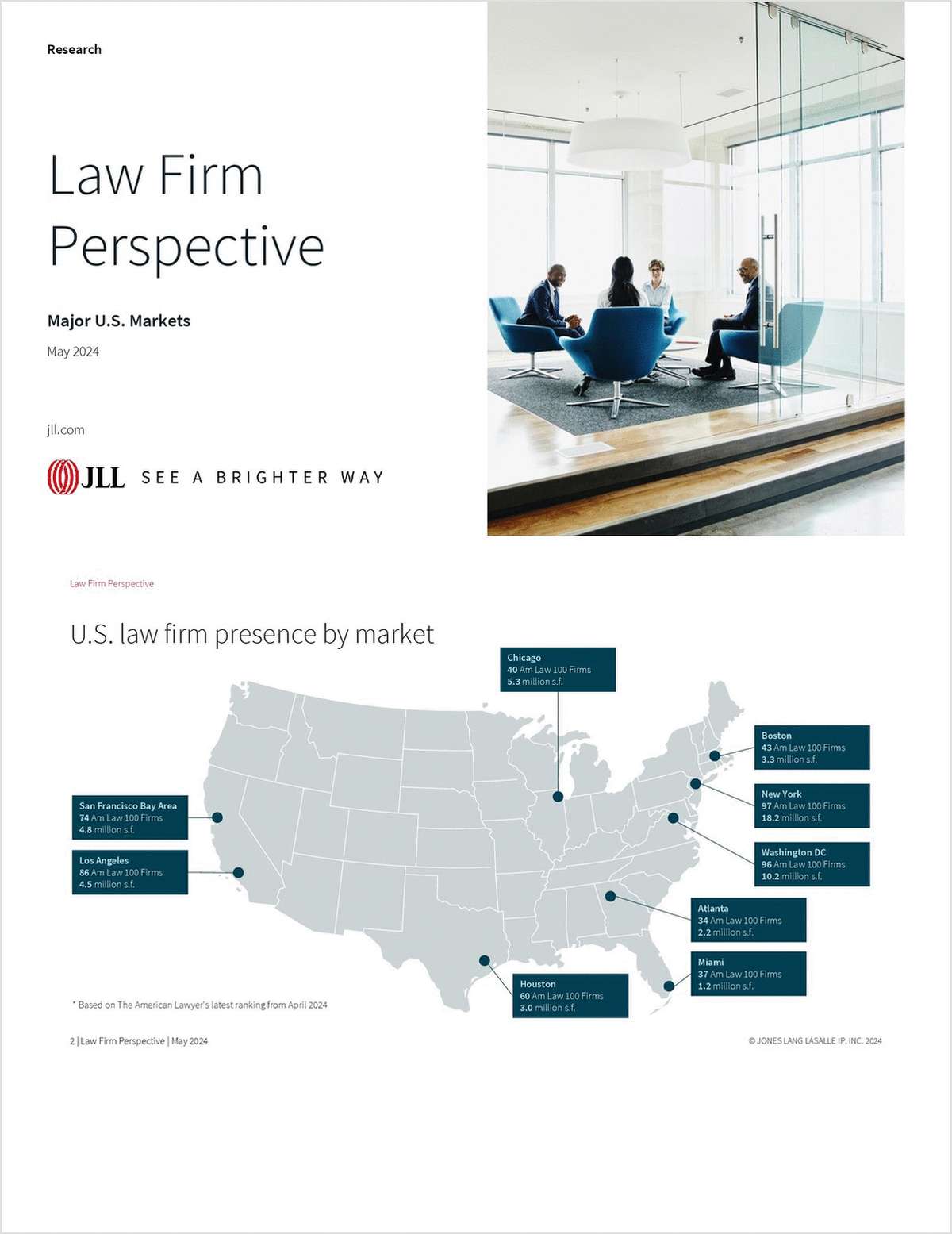Burford Says It Poured $1.3B Into Legal Market in 2017
The amount the litigation funder put into new commitments is triple its investment figure from the year prior. Most of the money went into portfolio finance deals.
January 10, 2018 at 01:44 PM
3 minute read

Litigation funder Burford Capital announced Wednesday it poured more than $1.3 billion into new investments in 2017, more than triple the amount it deployed the year prior.
The funds were deployed both from the publicly traded funder's balance sheet, and from managed funds and other vehicles. Burford said it committed 54 percent of new investments from each of those two categories in portfolio litigation finance deals.
Only a small percentage—5 percent and 6 percent, respectively, from the two pools of capital—were committed to more traditional “single case finance.” The metric is reflective of what insiders said has been a trend in the industry toward funders investing in batches of a company's or law firm's litigation, rather than just one case.
“It's certainly a trend that has exhibited itself over the last several years,” Burford CEO Christopher Bogart said in an interview. Even so, he noted, Burford still poured a total of $72.7 million into single case finance in 2017.
The numbers reflect a significant jump in the pace of capital deployment by Burford, in an industry now flush with cash. In 2016, Burford committed $378 million in new investments, up 83 percent compared to 2015, according to a press release from March 2017.

At the end of 2016, Burford acquired Gerchen Keller Capital, its biggest rival in the space. At the time, Burford reported that Gerchen Keller had $1.3 billion in assets under management. That acquisition—and the funds that came with it—helped fuel Burford's expanded investment activity in 2017, Bogart said Wednesday.
“By increasing the pools of capital from which we draw, [the acquisition] obviously lets us do more business. Burford would not have been able just off its own balance sheet to go out and write $1.3 billion [in new deals],” he said.
While litigation funding arrangements are typically non-recourse, in 2017, the second-largest category of new investment for Burford was recourse finance. Those are deals in which—if the underlying claim were to go bust—Burford would not lose all or any of its principal investment.
Eight percent of its balance sheet commitments and 2 percent of its fund and other vehicle commitments were directed into “legal risk management” products. These are deals in which Burford does not expect to deploy capital, such as providing an indemnity.
Back in mid–2017, Burford was already well on pace for a year of bumper deployment, with investments of just under a half-billion dollars. At the time, Burford managing director Travis Lenkner, who came from Gerchen Keller, said in an interview that a significant category of Burford's investments was in advancing law firm receivables, and underscored that the funder was providing many other types of finance beyond backing individual plaintiff cases.
Bogart on Wednesday said the huge jump in deployment is also being driven by increased law firm adoption of funding. He pointed to recent survey numbers indicating that, over the past four years, use of litigation finance by law firms has grown significantly; just 7 percent of survey respondents reported using financing in 2013, compared with 36 percent in 2017.
Burford's stock closed up 5.80 percent on Wednesday in London compared with the previous day, according to Bloomberg LP. Burford intends to release its full year results for 2017 on March 14, it said in its press release.
This content has been archived. It is available through our partners, LexisNexis® and Bloomberg Law.
To view this content, please continue to their sites.
Not a Lexis Subscriber?
Subscribe Now
Not a Bloomberg Law Subscriber?
Subscribe Now
NOT FOR REPRINT
© 2024 ALM Global, LLC, All Rights Reserved. Request academic re-use from www.copyright.com. All other uses, submit a request to [email protected]. For more information visit Asset & Logo Licensing.
You Might Like
View All


Trending Stories
- 1Business Breakups: Why Business and Commercial Cases Are Well-Suited to Mediation
- 2Prosecutors Drop Charges Against Ex-Miami Commissioner and Attorney
- 3Pennsylvania Modernizes Trust Administration With New Directed Trust Statute
- 4Farella Hires Former AUSA, Jan. 6 Prosecutor
- 5Dougherty Jury Returns $2M Verdict
Who Got The Work
Michael G. Bongiorno, Andrew Scott Dulberg and Elizabeth E. Driscoll from Wilmer Cutler Pickering Hale and Dorr have stepped in to represent Symbotic Inc., an A.I.-enabled technology platform that focuses on increasing supply chain efficiency, and other defendants in a pending shareholder derivative lawsuit. The case, filed Oct. 2 in Massachusetts District Court by the Brown Law Firm on behalf of Stephen Austen, accuses certain officers and directors of misleading investors in regard to Symbotic's potential for margin growth by failing to disclose that the company was not equipped to timely deploy its systems or manage expenses through project delays. The case, assigned to U.S. District Judge Nathaniel M. Gorton, is 1:24-cv-12522, Austen v. Cohen et al.
Who Got The Work
Edmund Polubinski and Marie Killmond of Davis Polk & Wardwell have entered appearances for data platform software development company MongoDB and other defendants in a pending shareholder derivative lawsuit. The action, filed Oct. 7 in New York Southern District Court by the Brown Law Firm, accuses the company's directors and/or officers of falsely expressing confidence in the company’s restructuring of its sales incentive plan and downplaying the severity of decreases in its upfront commitments. The case is 1:24-cv-07594, Roy v. Ittycheria et al.
Who Got The Work
Amy O. Bruchs and Kurt F. Ellison of Michael Best & Friedrich have entered appearances for Epic Systems Corp. in a pending employment discrimination lawsuit. The suit was filed Sept. 7 in Wisconsin Western District Court by Levine Eisberner LLC and Siri & Glimstad on behalf of a project manager who claims that he was wrongfully terminated after applying for a religious exemption to the defendant's COVID-19 vaccine mandate. The case, assigned to U.S. Magistrate Judge Anita Marie Boor, is 3:24-cv-00630, Secker, Nathan v. Epic Systems Corporation.
Who Got The Work
David X. Sullivan, Thomas J. Finn and Gregory A. Hall from McCarter & English have entered appearances for Sunrun Installation Services in a pending civil rights lawsuit. The complaint was filed Sept. 4 in Connecticut District Court by attorney Robert M. Berke on behalf of former employee George Edward Steins, who was arrested and charged with employing an unregistered home improvement salesperson. The complaint alleges that had Sunrun informed the Connecticut Department of Consumer Protection that the plaintiff's employment had ended in 2017 and that he no longer held Sunrun's home improvement contractor license, he would not have been hit with charges, which were dismissed in May 2024. The case, assigned to U.S. District Judge Jeffrey A. Meyer, is 3:24-cv-01423, Steins v. Sunrun, Inc. et al.
Who Got The Work
Greenberg Traurig shareholder Joshua L. Raskin has entered an appearance for boohoo.com UK Ltd. in a pending patent infringement lawsuit. The suit, filed Sept. 3 in Texas Eastern District Court by Rozier Hardt McDonough on behalf of Alto Dynamics, asserts five patents related to an online shopping platform. The case, assigned to U.S. District Judge Rodney Gilstrap, is 2:24-cv-00719, Alto Dynamics, LLC v. boohoo.com UK Limited.
Featured Firms
Law Offices of Gary Martin Hays & Associates, P.C.
(470) 294-1674
Law Offices of Mark E. Salomone
(857) 444-6468
Smith & Hassler
(713) 739-1250











